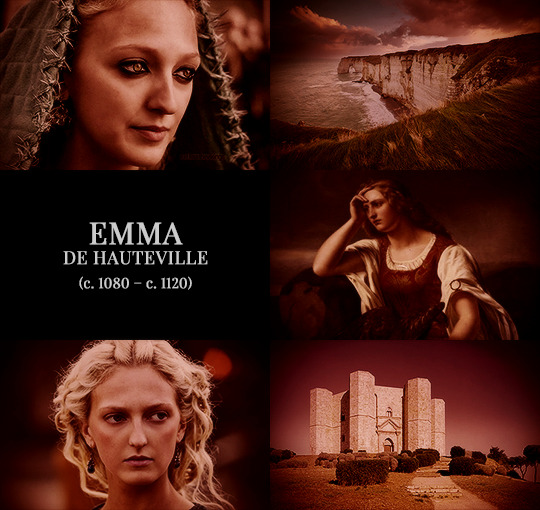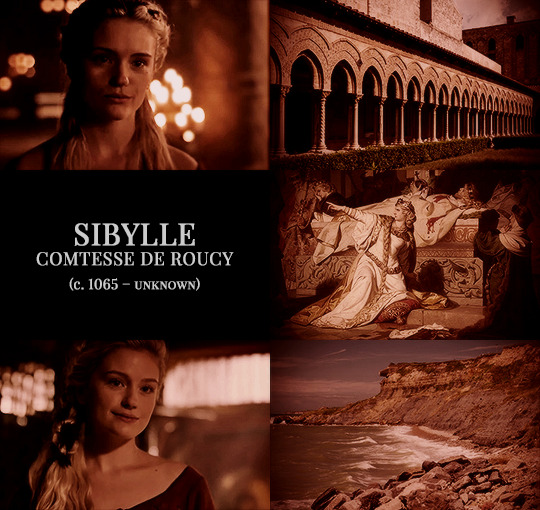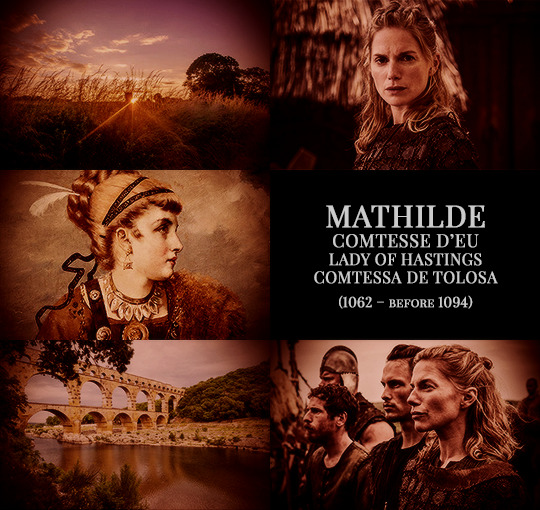#sichelgaita of salerno
Explore tagged Tumblr posts
Text

Isabel de Conches, Sichelgaita of Salerno, Sibyl (wife of Robert Bordet), Juliana of Breteuil, Dionisia of Grauntcourt, Petronilla de Grandmesnil (and others): Am I a joke to you???
2 notes
·
View notes
Text
Salerno. Successo per la XVII edizione del Premio Internazionale Principessa Sichelgaita | Battipaglia 1929 | www.battipaglia1929.it
View On WordPress
0 notes
Text
Joan of Arc
Matilda of Canossa
Isabella of Castile
Caterina Sforza
Lagertha
Dihya Al-Kahina
Sichelgaita of Salerno
Jeanne “Hachette” Laisne
Isabel of Conches
Joanna of Flanders
There are many more women who could be included on this list, including ones who defended castles or commanded forces. Some accounts, such as Eleanor of Aquitaine leading a troop of women during the Second Crusade, have been shown to be untrue or gross exaggerations made by medieval writers. Other tales, such as the story of Onorata Rodiani, who is said to have disguised herself as a man and joined up with a mercenary company in the 15th century, are also hard to verify. There are also many accounts of unnamed women who took part in battles or sieges, such as the woman of Toulouse, who operated a siege machine that killed Simon de Montfort as he led crusaders in an attack on the city during the Albigensian Crusade. Finally, there is the story of Big Margot, a lady who was the standard bearer for a Flemish army at the Battle of Roosebeke in 1382 and would die in battle.
44 notes
·
View notes
Photo

Sichelgaita of Salerno - a formidable sight in armor
Sichelgaita of Salerno (born ca. 1036) was an Italian princess who accompanied her husband on campaign and donned armor.
She was the daughter of Prince Guaimar of Salerno. In 1058, her brother arranged her marriage to Robert Guiscard (1020-1085), the Norman Duke of Apulia and Calabria. The son of a minor Norman noble, Robert was almost penniless when he had landed in Italia, but eventually gained power and influence. This marriage provided him with ties to a high-status family. She and Robert had 8 children together.
Sichelgaita’s military activity is reported by two writers: the chronicler William of Apulia (who was writing in the 1090’s) and the Byzantine princess Anna Comnena (1083-1153). William of Apulia wrote that in 1080, when a revolt rose against her husband, Sichelgaita took command of the siege of Trani while Robert headed south. Peter of Trani surrendered and begged for forgiveness.
Anna Comnena gives the following description of Sichelgaita: “She went on campaign with her husband and when she donned armor she was a formidable sight”. According to the princess, Robert waited for his wife to arrive before going out on his campaign against the Byzantine Emperor. She mentions that, in October 1081, during a battle for the possession of a Byzantine city, some of the Norman men were fleeing. Sichelgaita drove them back:
“There is a story that Robert’s wife Gaita, who used to accompany him on campaign like another Pallas, if not a second Athena, seeing the runaways and glaring fiercely at them, shouted in a very loud voice, « How far will ye run? Halt! Be men! » (…) As they continued to run, she grasped a long spear and charged at full gallop against them. It brought them to their senses and they went back to fight”.
According to an account of the same battle by William of Apulia, Sichelgaita was wounded by an arrow and narrowly escaped capture. Anna Comnena adds that Sichelgaita also avoided capture during the naval battle of Corfu in 1085, which implies that she could have been in the thick of the action. Valerie Eads notes that the troops that she commanded during these battles may well have been her own and that “her presence says as much as the limits of her husband’s authority as it does about her own vigor and courage”.
She managed to have her son Roger named as the heir after her husband’s death in 1085.The chronicler Oderic Vitalis (1075- c.1142) reported that she tried to poison her stepson Bohemond (Robert’s son by his previous wife) and poisoned her husband but those stories may be apocryphal or based on rumors spread by said stepson. Sichelgaita nonetheless remained politically influential, exercising a regency on her son’s behalf. She died in 1090.
Bibliography:
Eads Valerie,”Sichelgaita of Salerno”, in: Higham Robin, Pennington Reina (ed.), Amazons to fighter pilots, biographical dictionary of military women vol.2, pp. 399-400.
Skinner Patricia, ‘“Halt! Be Men!”: Sikelgaita of Salerno, Gender and the Norman Conquest of Southern Italy’ Gender & History, Vol.12 No. 3 November 2000, pp. 622–641.
#women in armor#sichelgaita of salerno#sichelgaita#salerno#woman warrior#women warriors#women in history#history#medieval women#medieval history#women's history#women in war#women commanders#badass women#italia#italian history#warrior women
89 notes
·
View notes
Link
#medieval women#joan of arc#matilda of canossa#isabella of castile#caterina sforza#lagertha#khawlah bint al-azwar#sichelgaita of salerno#jeanne hachette#isabel of conches#joanna of flanders
0 notes
Photo









Women of the House of Hauteville
Emma de Hauteville. Daughter of Robert Guiscard and Aubrée de Bourgogne. Mother of Altrude de Hauteville, principessa di Salerno. Grandmother of Marie de Hauteville, comtesse d’Édesse.
Mathilde, comtessa de Barcelona. Daughter of Robert Guiscard and Sichelgaita di Salerno. Grandmother of Ximena d’Osona, comtessa de Fois; Berenguera de Barcelona, reina de Castilla; Estefania de Barcelona, comtessa de Bigorra; Almodis de Barcelona; and Ermengarda, vescomtessa de Narbona.
Sibylle, comtesse de Roucy. Daughter of Robert Guiscard and Sichelgaita di Salerno. Mother of Mabel de Roucy, comtesse de Jaffa.
Mathilde, comtesse d’Eu and comtessa de Tolosa. Daughter of Roger Bosso and Judith d’Évreux.
Félicie, magyar királyné. Daughter of Roger Bosso and Éremburge de Mortain. Mother of Árpád-házi Zsófia.
Constance, princesse d’Antioche. Daughter of Bohémond II, prince d’Antioche and Alix de Jérusalem. Mother of Marie d’Antioche, Byzantine Empress; Philippa d’Antioche, dame de Toron; and Agnès d’Antioche, magyar királyné.
Constance, regina di Sicilia. Daughter of Roger II of Sicily and Béatrice de Rethel. Mother of Holy Roman Emperor, Friedrich II.
Elvire, comtesse de Brienne. Daughter of Tancrède I of Sicily and Sibilla di Acerra. Mother of Marguerite de Brienne, comtesse de Sidon. Ancestress of Jacquette de Luxembourg, Duchess of Bedford.
Constance, dogaressa di Venezia. Daughter of Tancrède I of Sicily and Sibilla di Acerra.
#house of hauteville#medieval#historyedit#french history#italian history#european history#asian history#women's history#history#royalty aesthetic#nanshe's graphics
119 notes
·
View notes
Text
La luce dei normanni
Finalmente disponibile in cartaceo l'ultimo libro di Francesca Cani, il quarto romanzo dalla saga de Gli Eredi di Holstein !Trama: Anno Domini 1069. Filippo di Lacus è l'unico erede di un feudo saccheggiato, l'ultimo rimasto in vita di un'antica famiglia e la sua spada è la sola che può reclamare vendetta. In battaglia lo chiamano il Falco, poiché egli non nutre pietà né emozioni. La forza fisica è la sua sola alleata, finché il destino lo porta a sud. Nella terra di Puglia dove regnano Roberto il Guiscardo e Sichelgaita di Salerno, Filippo incontra una giovane che con la sua luminosa presenza riesce a diradare le sue tenebre. Lucilla d'Altavilla è innocente, sincera e desidera la libertà, ma suo zio vuole per lei un marito potente e i Normanni la destinano proprio al Falco di Lacus. Lucilla, che con il suo canto ammalia la corte, non sa che sarà consegnata proprio a colui che il suo cuore teme e sogna in egual misura. La giovane viene data in sposa a Filippo, Lucilla è ormai sua e non può opporsi. Proprietà di un soldato che non sa provare amore, diviene signora di un castello in rovina, vittima di un complotto che ha radici profonde. Intanto gli eserciti marciano sulla polvere in cerca di un manoscritto, un leggendario ordine di cavalieri si oppone ai malvagi e Lacus è il centro del mistero. Ma sulle sponde del lago di Garda, dalle ceneri di un uomo, nasce un legame fatto di sguardi e carezze mentre la magia di un'estate rende immortale un sentimento che nemmeno le prove più aspre potranno spezzare.

https://www.amazon.it/Filippo-Lucilla-luce-dei-Normanni/dp/8833750841
0 notes
Photo

William Duke of Normandy (William the conquerer), William prince of Orange, King Henry V, Mary Queen of Scots, William Marshal, Godfrey of Bouillon, Hugh De Payne, King Arthur, Richard The Lionheart, El Cid, Alexander Nevsky, Edward The Black Prince, William Wallace, Bertrand Du Guesclin, John Hawkwood, Geoffroi De Charney, Andre De Montebard, Saint George, Roger De Flor, Pierre De Bologna, Queen Maude, Isabella of France, Matilda of Flanders, Eleanor of Provence, Mary De Bohun, Elizabeth Woodville, Eleanor of Castile, Joann of Arc, Lady Godiva, Julian of Norwich, Jane Shore, Katherine Swynford, Mrs. runtinger, Rose of Burford, Margery Kemp, Aethelflaed (female general), Sichelgaita, Dame Nicolaa de la Haye, Countess of Pembroke (wife of william valence), Black Agnes Countess of Dunbar, Maria (female Italian soldier mentioned by Pertrarch), Tortula of Salerno, Felicie de Almenia, Perette Perone, Perrennelle Flammel, Francisca Romano, Anna Comnena, Hrostsvitha of Gandersheim (Nun who was germanys first poet, Europes first playwright, first female writer), Marie De France, Thomasse, Christine de Pisan, Anastasia (illuminator), Charlemagne...
1 note
·
View note
Text
Warrior women timeline
Here is a timeline gathering all the warrior women featured on this blog through articles or links.
When a woman lived across two centuries, I placed her under the century where most of her military action took place.
8th millenium BCE
-Ancient remains in Peru reveal young, female big-game hunter
4th millennium BCE
-Hunter-gatherers women in present-day California may have fought in battle
16th century BCE
-Ahhotep (fl.c.1560–1530 BCE)
15th century BCE
-Hatshepsut (c.1508 BC-1457 BCE)
13th century BCE
-Fu Hao (c. 1200 BCE) and at least 100 other women
8th century BCE
-Samsi (r.732-728 BCE)
-Yatie (fl.703 BCE)
-Armenian female warrior from the kingdom of Urartu (c.8th century-6th century BCE)
6th century BCE
-13 years old Scythian girl buried with weapons
-Amazon warrior women
-Tomb containing three generations of warrior women unearthed in Russia
-Sparethra (fl.545 BCE)
-Tomyris (fl. 530 BCE)
5th century BCE
-Telesilla of Argos (fl.494/493 BCE)
-Hydna of Scione (fl. 480 BCE)
-Artemisia I of Halicarnassus (fl. 480 BCE)
-Tirgatao (fl.430-390 BCE)
4th century BCE
-Artemisia II of Halicarnassus ( ? - 351 BCE)
-Ada of Caria ( 390- 323 BCE)
-Cynane (c. 357- 323 BCE)
-Warrior women of ancient Macedon
-Indian women as palace guards
3rd century BCE
-Berenice II Euergetes (273 -221 BCE)
-Parthian Era women are buried with weapons ( 250 BCE-224 CE)
-Huang Guigu (fl.246-221 BCE)
2nd century BCE
-Amage (fl. end of the 2nd Century BCE)
-Cleopatra II (c. 185– 116/115 BCE)
-Cleopatra III (161-101 BCE)
-Cleopatra Thea (c. 164 – 121 BC)
-Cleopatra IV (c.138/134 -112 BCE)
-Shanakdakhete (r. c. 170 BCE)
-The Romans fight against Lusitani and Bracari women (138-137 BCE)
-Cimbrian and Ambrones women fight against the romans at Vercellae and Aquae Sextiae (101 BCE)
1sth century BCE
-Hypsicratea (fl.68-63 BCE)
-Fulvia (c. 83 BCE - 40 BCE)
-Amanirenas (r. c. 0-10 BCE)
1st century CE
-Agrippina the Elder (c. 14 BCE – 33 CE)
-Trưng Trắc and Trưng Nhị (14-43) and their female generals: Le Chan, Dieu Tien, Bao Chan, Nguyen Thai, Nguyet Do, Phung Thi Chinh
-Munatia Plancina (d.33)
-Boudicca (30-61)
-Triaria (fl.68)
-Verulana Gratilla (fl.69)
-Warrior women of Mongolia, Kazakhstan, northern China and Korea (1st to 5th century CE)
2nd century CE
-Marcomanni women wearing armor are found dead on the battlefield (166- 180)
3rd century CE
-Lady Triệu (fl.248)
-Zenobia (240-274)
-Sarmatian women served as officers in the Roman army (c.200-300)
4th century CE
-Xun Guan (b. c.303)
-Mavia (r. c. 375-c. 425)
-Kong (late fourth century - 460s)
6th century CE
-Fredegund regina (545-597)
-The “island girl”
7th century CE
-Nusayba bint Ka’ab/ Umm Umarah, Umm Sulaim, Umm Haram bint Milhan (fl.625)
-Umm Al Dhouda bint Mas’ud (fl.628)
-Apranik and Negan (fl. c.630)
-Kawlah bint Al-Azwar (fl.634-638)
-Umm Hakim (fl.643)
-Āʾishah bint Abī Bakr (c.614-678)
-Zaynab bint Ali (fl.680)
-K’abel (r. 672-692)
-Lady K'awiil Ajaw (fl.680)
-Ix Wak Chan Ajaw (fl. c.682)
-Kahina (died 703)
8th century CE
-Azadeh (c.750)
9th century CE
-Banu Khorramdin (died c.837)
10th century CE
-Æthelflæd (c. 870 – 918)
-Empress Yingtian (878-953)
-Emma of France (894-934)
-Empress Jing’an (d.935)
-Xiao Hunjan (fl. 994, d.1007)
-Empress Chengtian (953-1009)
-Women of the Kievan Rus’ fight at the battle of the Danube (971)
-Widow of Wulfbald ( fl. c.990)
-Estonian women are buried with weapons
-Armed women of the Viking world
-Viking warrior woman of Birka
-Battle scared viking shield-maiden gets facial reconstruction for the first time
11th century CE
-Wife of Deviux (fl.1018)
-Gidinild (early 11th century)
-Akkadevi (fl.1010-1064)
-Richilde of Hainaut (c.1018-1074)
-Beatrice of Lorraine (c.1020-1076)
-Adelaide of Turin (fl. 1036 - d.1091)
-Sichelgaita of Salerno (c.1036-1090)
-Matilda of Tuscany (c.1046-1115)
-Isabel de Conches (fl.1070-1100s)
-Lady Six Monkey (1073-1100)
-Anonymous women of the first crusade (1096-1099)
12th century CE
-Rixendis of Parez
-Sibyl (wife of Robert Bordet)
-Ida of Cham (c.1055-1101)
-Clemence of Burgundy (c. 1078 – c. 1133)
-Liang Hongyu (d.1135)
-Gwenllian Ferch Gruffydd (1100-1136)
-Sybil of Anjou (c.1112-1165)
-Princess Fannu (died in 1147)
-Anonymous women of the second crusade (1147-1149)
-Dionisia of Grauntcourt (fl. mid-12th century)
-Naiki Devi (fl.1173)
-Ermengarde of Narbonne (ca. 1127/1129 -ca. 1194)
-Tomoe Gozen, Yamabuki & Aoi (12th-13th century)
-Margaret of Beverley (c.1150- c.1215)
-Fujinoye (fl.1189)
-Anonymous women of the third crusade (1189–1192)
13th century CE
-Nicolaa de la Haye (c.1160-1230)
-Hangaku Gozen (c.1172- after 1201)
-Raziya Sultan (c.1205-1240)
-Yang Miaozhen ( ?- died after 1231)
-The women of Riga fight to defend the city (1210)
-Daughter of commissionner Liu (fl.1220)
-Anonymous women of the fifth crusade (1217-1222)
-Margaret of Provence (1221-1295)
-Malcalda Scaletta (c.1240-1308)
-Khutulun (c.1260- c.1306)
-Dona Alicsèn de Montesquiu (fl.1285)
-Mercadera (fl.1285)
-Walpurgis (late 13th century-early 14th century)
14th century CE
-Crusade project of the Genoese ladies (1301)
-Unnamed Flemish mercenary (d.1335)
-Maria of Pozzuoli (fl.1340)
-Joanna of Flanders (b. c.1295 - after 1373)
-Marzia degli Ubaldini (c.1317-1374)
-Jeanne de Penthièvres (c.1320-1384)
-Julienne du Guesclin (c.1330-1405)
-Eleanor of Arborea (1340-1404)
-Han-E (b.1345)
-Makouraino (fl.1341)
-Anka of Prasetin (fl.1358-1378)
-The women of Palencia defend their city (1388)
-Grave of a warrior woman found in Mongolia
-Agnes Hotot
-A “predominately female cavalry” force fights in Japan
15th century CE
-Chanan Cori Coca (early 15th century)
-Margherita Attendolo (fl.1415-1416)
-Tang Sai’er (1399- after 1420)
-Hussite female soldiers (1420-1428)
-Orsina Visconti (fl.1426)
-Claude des Armoises (c.1410- after 1439)
-Antonia Torelli (fl.1448)
-Camilla Rodolfi (fl.1449)
-Bona Lombarda (c.1417-d.1470s)
-Bianca Maria Visconti (1425-1468)
-Johanna of Rožmitál (c.1430-1475)
-Jeanne Hachette (fl.1472)
-Donella Rossi (fl.1482)
-Elise Eskilsdotter (? - c.1492)
-Caterina Sforza (1463-1509)
-Mandukhai Khatun (1448-1510)
16th century CE
-Catherine of Aragon (1485-1536)
-Idia (late 15th century-16th century)
-Lady Washi (1498-1557)
-Ōhōri Tsuruhime (1526 – 1543)
-Madeleine de Saint-Nectaire (c.1528/30-1588)
-Grace O’Malley (c.1530–1603)
-Lady Qi (c.1530-1588)
-Amina (c.1533-1610)
-Rani Abakka Chowta (r.1544-1582)
-Philippine-Christine de Lalaing (1545-1582)
-Chand Bibi (1550-1599)
-Marie de Brabançon (fl.1569)
-María la Bailadora (fl.1571)
-Women fight to defend La Rochelle (1572-1573)
-Yoshioka Myorin-ni (fl.1586)
-María Pita (1565 – 1643)
-Tachibana Ginchiyo (1569-1602)
-Women possibly fought at the battle of Senbonmatsubara (1580)
17th century CE
-Yuki no Kata (fl.1600)
-Qin Liangyu (1574/5-1648)
-Njinga of Ndongo and Matamba (1582-1663)
-Mary Bankes (c.1598–1661)
-Rani Abakka Chowta (fl.1618) (the second of the two queens who bore this name)
-Xanzad (fl. c.1623-1640)
-Ma Fengyi (d.1633)
-Anne Cunningham (d.1647)
-Alberte-Barbe d'Ernécourt, Dame de Saint-Baslemont (1607-1660)
-Liu Shuying ( c.1620- after 1657)
-Shen Yunying (1624-1660/1661)
-Bi Zhu (fl.1642)
-Alena Arzamasskaia ( ?-1670)
-Weetamoo (c.1635-1676)
-Nāzo Tokhi (1651-1717)
-Christian Davies (1667-1739)
-Anne Chamberlyne (1667-1691)
-Botagoz-batyr (c.1667-1757)
-Aqualtune (d.1675)
-An English “gentlewoman” fights in a naval battle (1692)
-Dandara (d.1695)
-Julie d’Aubigny (c.1673-1707)
-Women protect the Mughal rulers Shah Jahan and Aurangzeb (1628-1707)
-Women employed as palace guards in Japan (1603-1868)
18th century CE
-Tatiana Markina
-Maria Ursula d'Abreu e Lencastro (1682-1730)
-Mai Bhago (fl.1704)
-Tomasa Tito Condemayta (1729-1781)
-Velu Nachiyar (1730-1796) and her commander Kuyili
-Women such as Faustina Gaffory, Josephine Jacobi and Rosanna Franschetti-Serpentini fight for Corsica’s independence (1729-1749)
-Gabriela Silang (1731-1763)
-Nanye’hi “Nancy” Ward (1738-1822)
-Rafaela Herrera (1742-1805)
-Anne Bailey (1742-1845)
-Micaela Bastidas (c.1744-1781)
-Bartolina Sisa (c.1750-1781)
-Gregoria Apaza (1751-1781)
-Deborah Sampson (1760-1827)
-Sada Kaur (c. 1762 – 1832)
-Reine Audu (?-1793)
-Félicité (1770-1841) & Théophile (1775-1819) Fernig
-Pélagie Durière (fl.end of the 18th century)
-Catherine Pochetat (1770-1828)
-Katharina Lanz (1771-1854)
-Bibi Sahib Kaur (1771-1801)
-Louise Antonini (1771-1861)
-Marie Angélique Duchemin (1772-1859)
-Rose Alexandrine Barreau (1773-1843)
-Julienne David (c.1779-1843)
-Sanité Belair (1781-1802)
-Ana María de Soto (fl.1793-1798)
-Hawaiian female warriors fight at the battle of Nu’anu Pali (1795)
-Dahomey Amazons (up to the late 19th century)
19th century CE
-Marie-Jeanne Lamartinière (fl.1802)
-Victoria Montou (born 18th century - 1805)
-Aleksandra Tikhomirova (late 18th century-1807)
-Ghaliyya Al-Wahabiyya (d.1818)
-Madame Poncet (1773-1834)
-Manono (c.1780 -1819)
-Bíawacheeitchish/Woman chief (d.1834)
-Juana Ramírez (1790-1856)
-Maria Quitéria de Jesus (1792-1853)
-Martha Christina Tiahahu (1800-1818)
-Akkeekaahuush/Comes Toward The Near Bank (ca. 1810-1880)
-Jind Kaur (1817-1863)
-Rani Avantibai (1821-1858)
-Qiu Ersao (c. 1822-1853)
-Zaynab (? -1850)
-Giuseppa Bolognara Calcagno ( c.1826-c.1884)
-Eliza Allen (c.1826- ?)
-Elizabeth Newcome (fl.1846)
-Maria de Jesus Dosamantes (fl.1846)
-Rani Lakshmibai (1828-1858)
-Frances Clalin Clayton (c. 1830 – after 1863)
-Su Sanniang (c. 1830- c.1854)
-Hong Xuanjiao (c. 1830- c.1854)
-Zhou Xiuying ( ?- 1855)
-Aazhawigiizhigokwe/Hanging Cloud (c.1835-c.1919)
-Biliíche Héeleelash/Among The Willows (1837-1912)
-Jeanne Merkus (1839-1897)
-Marie-Antoinette Lix (1839-1909)
-Nakazawa Koto (1839-1927)
-Heni Te Kiri Karamu (c. 1840-1933) other women also fought during the New-Zealand wars (1845-1872)
-Kady Brownell (1842-1915)
-Yamamoto Yaeko (1845-1932) and the women of the Aizu castle.
-Nakano Takeko (1847-1868), her mother Kôko, her sister Masako and the women of the joshigun.
-Jeanne Dieulafoy (1851-1916)
-Stana Kovačević (1850 - ?)
-Buffalo Calf Road Woman (c.1850s-1879)
-Pretty Nose (b.1851-d.c.1952)
-Marie Favier (b.1853, fl.1870)
-Moving Robe Woman (1854-1935)
-Minnie Hollow Wood (c.1856-1930′s)
-Ella Hattan (b.1859)
-Fanny Wilson and Nellie Graves (fl.1862-1863)
-Andjelija (Andja) Miljanov (fl.1876)
-Susie Shot-in-the-eye (fl.1876)
-Shinohara Kuniko (fl.1877)
-Agueda Kahabagan (fl.1896-1901)
-Japanese armor designed for a woman
-Women serve as palace guards in Thailand and among the Beir people
20th century CE
-Constance Markievicz (1868-1927)
-Alexandra Kudasheva (c.1873-c.1921)
-Maria Bochkareva (1889-1920)
-Yin Ruizhi (1890-1948)
-Yin Weijun (1894-1919/20?)
-Ekaterina Alekseeva (1895 - ?)
-Shote Galica (1895-1927)
-Émilienne Moreau (1898-1971)
-Nieves Fernandez (b.1906)
-Chan Wong Wah Yue (c.1906-1982)
-Fatima (fl.1914-1918)
-Soldaderas of the Mexican revolution (1910-1924)
-Women of the Italo-Ethiopian war (1935-1936)
-Women of the Spanish civil war (1936-1939)
-Tam Tai-men (fl.1937) at least 3,000 women formed a “women’s regiment” to fight against the Japanese
-Fanny Schoonheyt (1912-1961)
-Bracha Fuld (1916-1946)
-Faye Schulman (b.1919)
-Rita Rosani (1920-1944)
-Lydia Litvyak (1921-1943)
-Gertrude Boyarski (1922-2012)
-Khiuaz Dospanova (1922-2008)
-Manshuk Mametova (1922-1943)
-Manuela Orquejo (1924-2002)
-Aliya Moldagulova (1925-1944)
-Sara Ginaite (1925-2018)
-Simone Segouin (born in 1925)
-Galina Brok-Beltsova (born c.1925)
-Zina Portnova (1926-1944)
-Sara Yeshua-Fortis (b.1927)
-The women who fought for Hanoi (Vietnam war, 1955-1975)
21th century CE
-Zimbabwe’s female rangers
-Jegertroppen
-Mena Raghavan
129 notes
·
View notes
Photo

Hello and welcome to my new project!
What is this?
I will write about warrior women across history. By warrior women I mean women who directly fought or commanded armies even if we can’t be sure that they fought on the field. I will provide a short summary of their lives and military action.
I will be covering relatively unknown figures, which means that you won’t find Joan of Arc or Boudica on this blog. Ever heard of Sichelgaita of Salerno, Macalda Scaletta, Cynane, Han-E or Fujinoye? If not, welcome on board.
I know that I won’t be able to cover every military woman in history, I would seriously need a more than a lifetime for that. My primary interests are Japanese history and medieval Europe, but I will try to include women from different cultures and continents. There are already blogs and websites dealing with this subject, such as The-female-soldier or Rejected Princesses, so I usually won’t write about people they already covered. I will occasionally reblog and share articles related to this topic.
Who Am I & Why am I doing this?
I am Niniane, I am an history enthusiast. I spent a lot of time collecting stories of warrior women and decided that it would be nice to do something of it.
I also want to tackle stereotypes about women’s participation in history and to put unknown/anonymous figures under the spotlight. As a writer, some of these stories provided me with inspiration and I think it can be the same for people writing fantasy or historical fiction.
Feel free to correct me if I got something wrong (and note that English isn’t my first language). My ask box is open if you want to suggest me a woman.
Thank you for reading, hope you enjoy this new adventure!
#about#history#historyblr#women in history#women's history#women warriors#female warriors#female soldiers#women in war#japan#medieval history#ancient history#Japanese history#modern history#badass women#women fighters#fighting women
135 notes
·
View notes
Text
News: Salerno, residenti di via Sichelgaita e via Vernieri preoccupati per rifiuti e senza dimora nei pressi dell'asilo | www.salernoinweb.it
News: Salerno, residenti di via Sichelgaita e via Vernieri preoccupati per rifiuti e senza dimora nei pressi dell’asilo | www.salernoinweb.it
View On WordPress
0 notes
Text
Salerno Pulita ridà decoro in via Vernieri-Sichelgaita: raccolta nostra segnalazione | www.salernonotizie.it
View On WordPress
0 notes
Text
La luce dei normanni
#iorestoacasa a #leggere
Fantastica uscita assolutamente da segnalare, Francesca Cani torna in libreria con un nuovo romanzo: La luce dei Normanni Filippo e Lucilla
Il quarto volume volume dell’amata serie “Gli eredi di Holstein”.
Questo romanzo è sia un sequel della serie che un prequel, infatti ha come protagonista Filippo di Lacus, il padre di Doralice, la protagonista del primo volume della saga “Tristan e Doralice – Un Amore Ribelle” e l’abbiamo già consciuto proprio in quel libro come personaggio super affascinante di cui i lettori hanno richiesto a gran voce di poter conoscere la storia...ed eccola qui.
Ma non preoccupatevi, come tutti i romanzi della serie, anche Filippo e Lucilla è un romanzo leggibilissimo e godibilissimo da solo, per poterlo capire non occorre aver letto anche gli altri volumi (anche se io vi consiglio di leggere o prima o dopo di lui anche Tristan e Doralice per goderne appieno).
Filippo è sempre stato il mio personaggio secondario preferito del libro Tristan e Doralice perciò per me questo romanzo è imperdibile, Filuppo era famoso e misterioso e finalmente scopriremo perchè....

Link acquisto:
https://tinyurl.com/qvqxgz9 Trama: Anno Domini 1069. Filippo di Lacus è l'unico erede di un feudo saccheggiato, l'ultimo rimasto in vita di un'antica famiglia e la sua spada è la sola che può reclamare vendetta. In battaglia lo chiamano il Falco, poiché egli non nutre pietà né emozioni. La forza fisica è la sua sola alleata, finché il destino lo porta a sud. Nella terra di Puglia dove regnano Roberto il Guiscardo e Sichelgaita di Salerno, Filippo incontra una giovane che con la sua luminosa presenza riesce a diradare le sue tenebre. Lucilla d'Altavilla è innocente, sincera e desidera la libertà, ma suo zio vuole per lei un marito potente e i Normanni la destinano proprio al Falco di Lacus. Lucilla che con il suo canto ammalia la corte non sa che sarà consegnata proprio a colui che il suo cuore teme e sogna in egual misura. La giovane viene data in sposa a Filippo, ella è ormai sua e non può opporsi. Appartiene a un soldato che non sa provare amore, diviene signora di un castello in rovina, vittima di un complotto che ha radici profonde. Intanto gli eserciti marciano sulla polvere in cerca di un manoscritto, un leggendario ordine di cavalieri si oppone ai malvagi e Lacus è il centro del mistero. Ma sulle sponde del lago di Garda, dalle ceneri di un uomo, nasce un legame fatto di sguardi e carezze mentre la magia di un'estate rende immortale un sentimento che nemmeno le prove più aspre potranno spezzare.
Estratto:
«Non guardatemi così» lo ammonì lei, il viso rosso di vergogna. Le scoccò un sorriso da predatore. «Così come?» chiese con voce roca. «Come foste una minaccia.» «Quello che ora voglio da te non può nuocerti.» Profumava di mughetto, un fiore candido come la luce che emanava. Le sue labbra erano così vicine, Filippo deglutì il groppo che gli serrava la gola. «Non oserete» sibilò lei, si sporse all’indietro per sfuggirgli, puntandogli le mani sul petto. «Baciami ora, Lucilla, questa è la mia unica richiesta. Baciami e sarai libera» mormorò basso.
0 notes
Photo




WOMEN’S HISTORY † SICHELGAITA DI SALERNO (1036 – 16 April 1090)
Sichelgaita di Salerno was a daughter of Guaimario IV, the Lombard principe di Salerno. In 827, the Aghlabids had invaded Sicilia on the invitation of Euphemius, a Byzantine admiral who was rebelling against Mikhaēl II, the Byzantine Emperor. It took 70 years for the Aghlabids and, later, Fatimids to solidify their rule, but it was largely complete by 909. In the meantime, the Lombard nobles of Southern Italy were also fighting with the Byzantines for control of Southern Italy. As if things couldn't get any complicated, in 999, a group of Normans showed up in Southern Italy. Most of these Normans had left Normandie after quarreling with the one of ducs de Normandie, either Richard "le Bon" or his son, Robert "le Magnifique." Among these Normans were the numerous sons of Tancrède de Hauteville: Guillaume “Bras-de-Fer”, Drogon, Onfroi, Robert “Guiscard”, Mauger, Guillerm, and Roger “Bosso”, who with whom Guaimario allied himself. In 1051, Guaimario was assassinated, mostly likely by the Byzantines who were upset that he had allied himself with the Normans instead of them. In response, Sichelgaita married Robert “Guiscard” and her younger sister, Gaitelgrima, married Drogon. Sichelgaita and Robert had eight children: four sons and four daughters. Sichelgaita accompanied her husband on his conquests in southern Italy and Sicilia. She is said to have commanded troops in her own right, so much as that the Byzantine historian, Ánna Komnēnḗ, referred to as, "...like another Pallas, if not a second Athena." Among the battles that she commanded were the siege of Trani and also accompanied him in his campaigns against the Byzantines. Robert died in 1085 while on campaign. Even before Robert's death, Sichelgaita had made every attempt to ensure that one of her sons who succeed. After Robert's death, Bohémond (Robert's son by his first wife) fled from Salerno to Capua in fear of his ambitious stepmother. With no clear successor, it is sometimes claimed that Sichelgaita tried to poison Bohémond, who promptly declared war. Sichelgaita and her son, Roger “Borsa”, allied themselves with Robert's brother, Roger “Bosso” (who had become the king of Sicilia in all but name.) In the end, Pope Urbanus II intervened and made Bohémond the principe di Taranto while Sichelgaita's son, Roger “Borsa”, succeeded as the duca di Puglia. Sichelgaita died in 1090 of unspecified causes and was buried in Montecassino.
#sichelgaita of salerno#house of hauteville#medieval#italian history#french history#women's history#history#women's history graphics#nanshe's graphics
17 notes
·
View notes